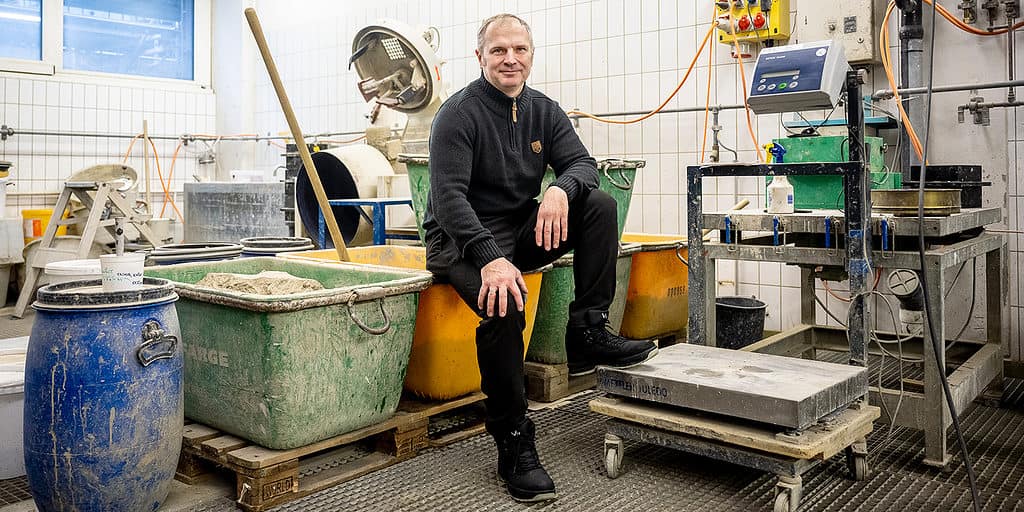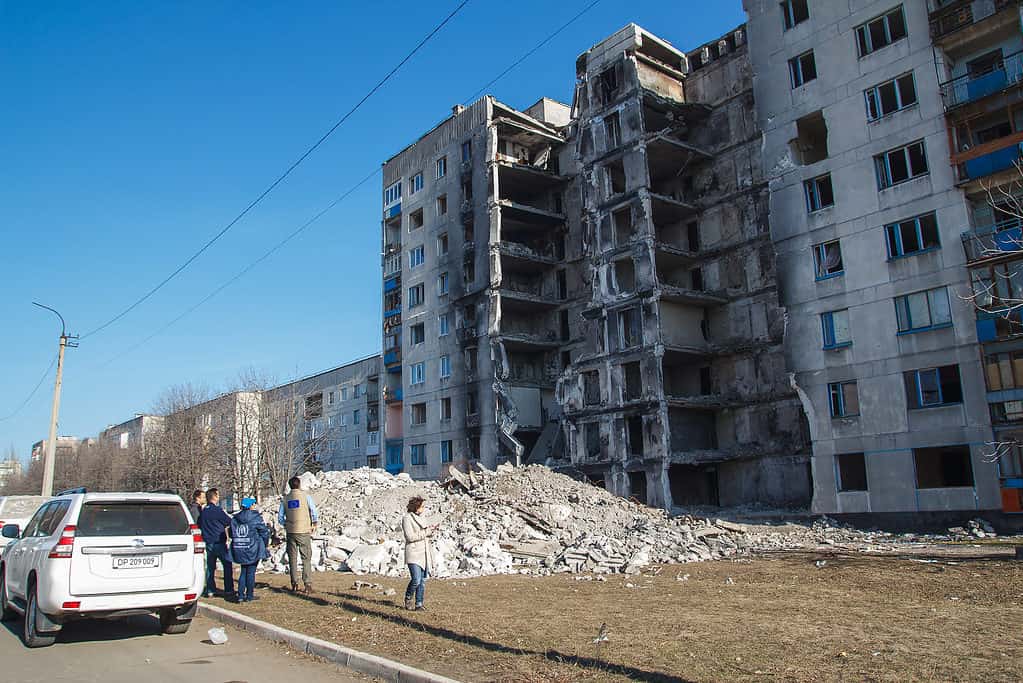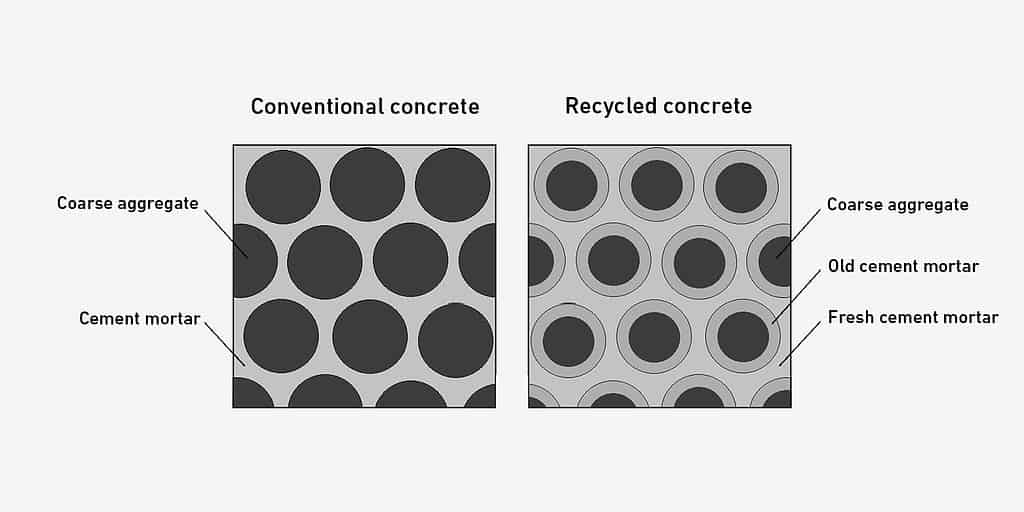As a father of four children, professor Viacheslav Troian was allowed to leave the country when Russia’s invasion of Ukraine started. After experiencing the brutal early days of the war, Troian found himself with his family in Hungary. Refugees didn’t have to pay for train tickets then, but Troian and his family had no clear plans for what to do next.
“We were standing at the train station in Budapest, and my wife and I were trying to decide where we should go,” Troian says.
He initially wanted to go to Vienna but by chance, was given a ticket to Zurich instead of Vienna, as he asked. He decided to follow through with the ticket and ended up in Switzerland, where he sent letters to various institutions, looking for a collaboration.
It wasn’t easy but ultimately, it proved to be a good call. He ended up at ETH Zurich, where he recently published a study on the role recycled concrete may play in the reconstruction of Ukraine.
“Some people replied that this is not their profile, but someone suggested writing a letter to colleagues from ETH with whom I am currently working. Together we discussed a project in our scientific profile, which could be useful to Ukraine,” Troian told ZME Science.

Troian is a chemical engineer specializing in concrete. He has over 20 years of experience working on various types of concrete, ranging from projects for the Ukrainian railway to the confinement around the damaged Chornobyl nuclear reactor. In ETH, he teamed up with Professors Ueli Angst and Robert Flatt, both of whom are also concrete specialists.
Concrete is one of the key pillars of our modern society, but producing concrete uses a lot of energy, and requires a lot of material. In the new study, the researchers describe how crushing concrete demolition waste and using it to produce fresh concrete can save up to 50% of the gravel or crushed stone required to produce concrete.
“When we demolish buildings, the demolished materials end up in construction waste landfills; when we build new buildings with conventional concrete, we have to quarry a lot of new crushed stone. If we could reuse at least some of the demolition waste, we would take up less landfill capacity and reduce crushed stone mining,” Troian says.
For war-torn Ukraine, this approach could save up a lot of resources.
Several countries, Ukraine included, use practically no recycled concrete. Switzerland, one of the leaders in using recycled concrete, builds new concrete with 18% recycled material.
But using recycled concrete isn’t a completely straightforward process. The first problem is logistical, Troian says.
“In my opinion, there are two main problems in the technology of concrete recycling. The first is the sorting of old concrete, which makes it possible to ensure the quality of the recycled aggregate and, accordingly, to increase its percentage in the recycled concrete. This is being successfully addressed in Switzerland, but remains a problem in Ukraine,” Troian explained in an email.

The second problem is even more challenging to deal with. Half of concrete consists of coarse aggregate (crushed stone or gravel), and the second half is hardened cement, fine aggregate (sand), and pores. After recycling, a significant part of the hardened cement, sand, and pores remains on the surface of the coarse aggregate.
“This additional porosity of the recycled aggregate creates additional problems for recycled concrete both fresh mixes (decrease in workability) and cured (decrease in strength and durability). And this is one of the main reasons for limiting the content of recycled aggregate in recycled concrete.”
Basically, if concrete with too much recycled content is used, it has a lower load-bearing capacity and is less resistant to water and erosion. In the new study, several ways to solve or reduce these problems are discussed. For instance, cleaning of the old cement paste on the surface of the recycled aggregate could help, as could other chemical treatments. However, the simplest solution to this problem, which is already deployed in Switzerland and could also be used in Ukraine, is the pre-wetting of recycled coarse aggregate.

Of course, given the immense damage that Ukraine has suffered, it won’t be possible to rebuild everything quickly. Even after the invasion ends (which is far from the case now), rebuilding will be a massive project that will require large-scale, international efforts. Recycled concrete alone won’t solve this, but it can be a part of the rebuilding process, a piece of a large puzzle that will eventually get Ukraine fully back on its feet.
But, as Troian points out, the use of recycled concrete isn’t useful only in post-war rebuilding, it’s useful in times of peace as well.
“The technology of concrete processing is interesting both in the post-war period for the purpose of recycling destroyed concrete structures (according to official data for the summer of 2022, up to 5% of the total housing stock in Ukraine) that cannot be repaired, and in peacetime, because in the coming decades in Ukraine the life cycle of prefabricated concrete houses built more than 50 years ago will end. The number of such houses in Ukraine will exceed 50% with a total housing stock of about 1 billion cubic meters.”
Troian is now considering adapting the technology of recycling concrete to the conditions of Ukraine and establishing a collaboration between ETH Zurich and the KNUCA University in Kyiv. “In the future, we hope to interest the government and business in Ukraine in its implementation,” Troian says.
Journal Reference: Troian V, Gots V, Keita E, Roussel N, Angst U, Flatt RJ: Challenges in material recycling for postwar reconstruction. RILEM Technical Letters, 16 December 2022, doi: external page10.21809/rilemtechlett.2022.171call_made






